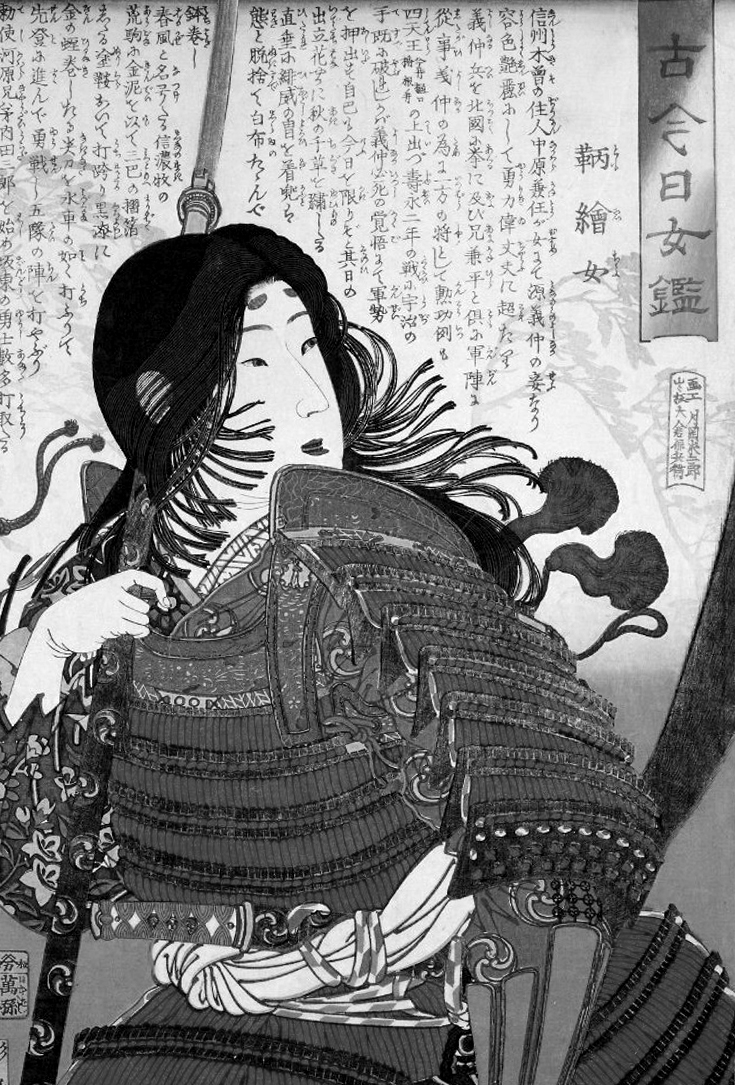There are a lot of complaints on Twitter and YouTube about Ghost of Yotei having a female protagonist as a samurai, and honestly, I’m not entirely sure what the issue is. For the record, I have zero interest in either Ghost of Tsushima or Ghost of Yotei, I haven’t played the former and will most likely not play the latter, so this isn’t me being defensive, as it’s just not my kind of game to begin with. But didn’t we just have this same conversation about some shitty Ubisoft game? Why are people so worked up over this?
Debunking the Myth of Male-Only Samurai in Japanese History
 Historically, Japan had female warriors, called onna-musha. And just like with Onimusha, people seem to keep forgetting they existed. These women were part of the samurai class and fought in battles alongside men. People like Tomoe Gozen and Hangaku Gozen were well-documented fighters during the Genpei War, and there are countless other examples throughout Japanese history of women defending castles, leading armies, and fighting to the death.
Historically, Japan had female warriors, called onna-musha. And just like with Onimusha, people seem to keep forgetting they existed. These women were part of the samurai class and fought in battles alongside men. People like Tomoe Gozen and Hangaku Gozen were well-documented fighters during the Genpei War, and there are countless other examples throughout Japanese history of women defending castles, leading armies, and fighting to the death.
Onna-Musha, Wikipedia
The idea that samurai had to be male is a modern misconception. Sure, later periods, especially during the Edo era, saw women’s roles more restricted. This shift largely happened because of the rise of neo-Confucianism in the Edo period, which imposed a stricter, patriarchal social order. Women were expected to focus on household duties, and samurai became bureaucrats rather than warriors. The role of samurai women transitioned from warrior to family caretaker, and the ideal of the female fighter faded from mainstream culture. Travel restrictions were tightened, and women were not even allowed to travel alone, making it difficult for them to maintain any active role in military or public life. Essentially, the emphasis on war diminished, and women’s freedoms were curtailed as part of this new social structure.
Edo Period shift, Koryu
But before that, during the Sengoku and Kamakura periods, women took up arms in some of Japan’s most significant battles. For instance, during the Siege of Oshi in 1590, Kaihime led a fierce defence against the Toyotomi clan, holding off the siege for days. In 1569, Ichikawa no Tsubone took command of the defence of Kōnomine Castle, rallying her ladies-in-waiting to protect their stronghold. In the Sengoku period, Ueno Tsuruhime led 34 women in a final suicidal charge against the invading Mōri army.
Kaihime, www2.harimaya.com | Women Warriors in History: 1,622 Biographies Worldwide from the Bronze Age to the Present, Book | Women Warriors: An Unexpected History, Book
Some of these women even led all-female units or became famous commanders in their own right. Ikeda Sen led 200 women armed with muskets during the Battle of Shizugatake in 1583, and Tachibana Ginchiyo formed and commanded her own female troops in Kyushu during the Siege of Yanagawa in 1600. Onamihime, a prominent figure in northern Japan, fought against her nephew Date Masamune to retain control over her clan, leading her forces in multiple battles. These women aren’t just footnotes in history—they were instrumental in these conflicts and recognised for their command and martial skill.
Ikeda Sen, Wikipedia | Tachibana Ginchiyo, www2.harimaya.com, Onamihime, Book
A Female Protagonist in Ghost of Yotei Isn’t Unrealistic
So, to argue that having a female samurai protagonist is unrealistic, woke, or “stupid” is just that… stupid. The history’s there if you take a moment to look into it. If anything, it’s refreshing to see a narrative exploring these historical figures. Even in a fictitious environment.
Again, I’m not here as a fan of Ghost of Yotei or the Ghost of… series. I just don’t get why having a female lead in a samurai story is controversial when history itself offers plenty of precedent for it.
I have a sneaking suspicion it’s less about a lack of understanding of history, and more about an unwillingness to accept certain realities about women—both historically and in the present. But I am probably very wrong about this… right?
Leave a Reply